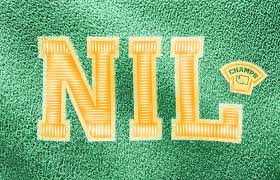The New High School Hustle: Inside the Lucrative, Unregulated World of High School NIL

High school athletes can now make millions from their name, image, and likeness (NIL), just like their college counterparts. While this new era offers unprecedented financial opportunities, it’s also creating legal chaos, unequal playing fields, and concerns that it could undermine high school sports as we know them.
For 17-year-old quarterback Julian “JuJu” Lewis, the ability to earn money from endorsements saved his beloved dachshund, Coco, by covering an $11,000 emergency vet bill. It also allowed him to purchase a fleet of luxury cars, including a Lamborghini Urus, and a black-diamond-encrusted Darth Vader chain. For Lewis, a top recruit who is now a freshman quarterback at the University of Colorado, these deals were life-changing. “We weren’t poor, but we weren’t financially on the hierarchy of the earth,” he told us. “Definitely no big black chains.”
Lewis is a prime example of the new reality in high school athletics. In 2021, the NCAA allowed college athletes to profit from their NIL, effectively erasing the “amateur status” rule that had governed both college and high school sports for decades. This change rendered most state-level high school NIL bans obsolete, and now, 44 states and Washington, D.C., allow high school athletes to make money from endorsements.
A Patchwork of Rules and an Uneven Playing Field
The problem is that the rules vary wildly from state to state, creating a chaotic landscape of unequal opportunities. For example, while Lewis could earn millions in Georgia, top quarterback recruit Trent Seaborn from Alabama was forced to turn down a potential $1.2 million trading card deal because his state still bans high school NIL payments.
This disparity has prompted athletes and their families to move to states with more lenient rules, leading to what the National Federation of State High School Associations (NFHS) is now closely monitoring as “NIL-motivated transfers.” Alabama, once a magnet for top athletes, is now seeing players leave for states like Georgia, which has a more favorable NIL policy.
The Seaborn family considered leaving Alabama to accept the seven-figure offer but ultimately decided against it to stay loyal to their school and community. Despite this, Trent’s father, Jason, now supports legislation to legalize high school NIL in Alabama, noting that it’s easy to “be on a moral high horse when you’re not being pressured.”
Money, Collectives, and the End of Innocence
While players like Lewis are in a class of their own with multi-million-dollar deals, most high school NIL agreements are much smaller, often ranging from $500 to $2,000 per social media post. Still, as more brands recognize the value of high school talent, the market is growing rapidly.
The biggest deals, however, are coming from companies like Leaf Trading Cards. Leaf’s president, Josh Pankow, says the company has spent “millions and millions of dollars” on high school NIL. By signing athletes early, Leaf hopes to capitalize on their memorabilia later if they become stars in college and the pros.
This influx of money has raised concerns that high school sports could become a “pay-to-play” system similar to what has emerged in college athletics, where university-affiliated donor “collectives” funnel money to top recruits. Rumors of six-figure offers to high school athletes are becoming common. A Tennessee high school collective reportedly offered star defensive end Cam Pritchett $750,000 to transfer schools. He turned it down, but the incident highlights how difficult it is for athletic associations to enforce their rules.
Beyond the legal and financial chaos, some worry about the impact on the athletes themselves. Coach Donovan Dooley, who works with some of the nation’s top quarterbacks, says that with the added responsibilities of photo shoots and brand deals, “You lose a little bit of your childhood, because it’s really work.”
Others, including leading NIL expert Roger Noll, worry that the unchecked flow of money could turn elite high schools into professionalized sports franchises that only pay lip service to education, making athletic powerhouses even more powerful.
Despite the fear and anxiety surrounding the future of high school NIL, most people agree that athletes should be able to profit from their talent. The big question remains: how to create a system with the right guardrails to prevent exploitation and preserve the integrity of high school sports. As Trent Seaborn puts it, there are “many pros and cons.” But for now, for athletes like Lewis and Seaborn, the game is still king, and playing it well is the surest way to win, both on and off the field.

